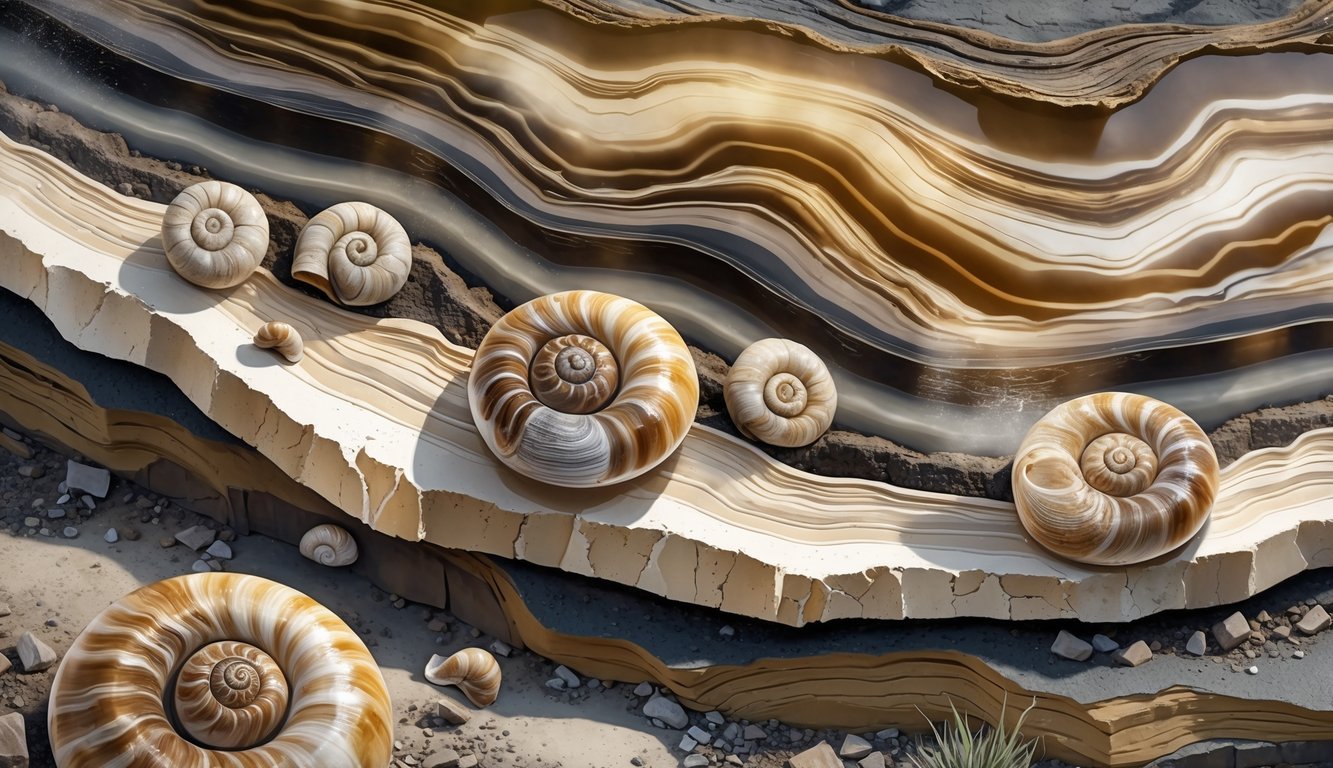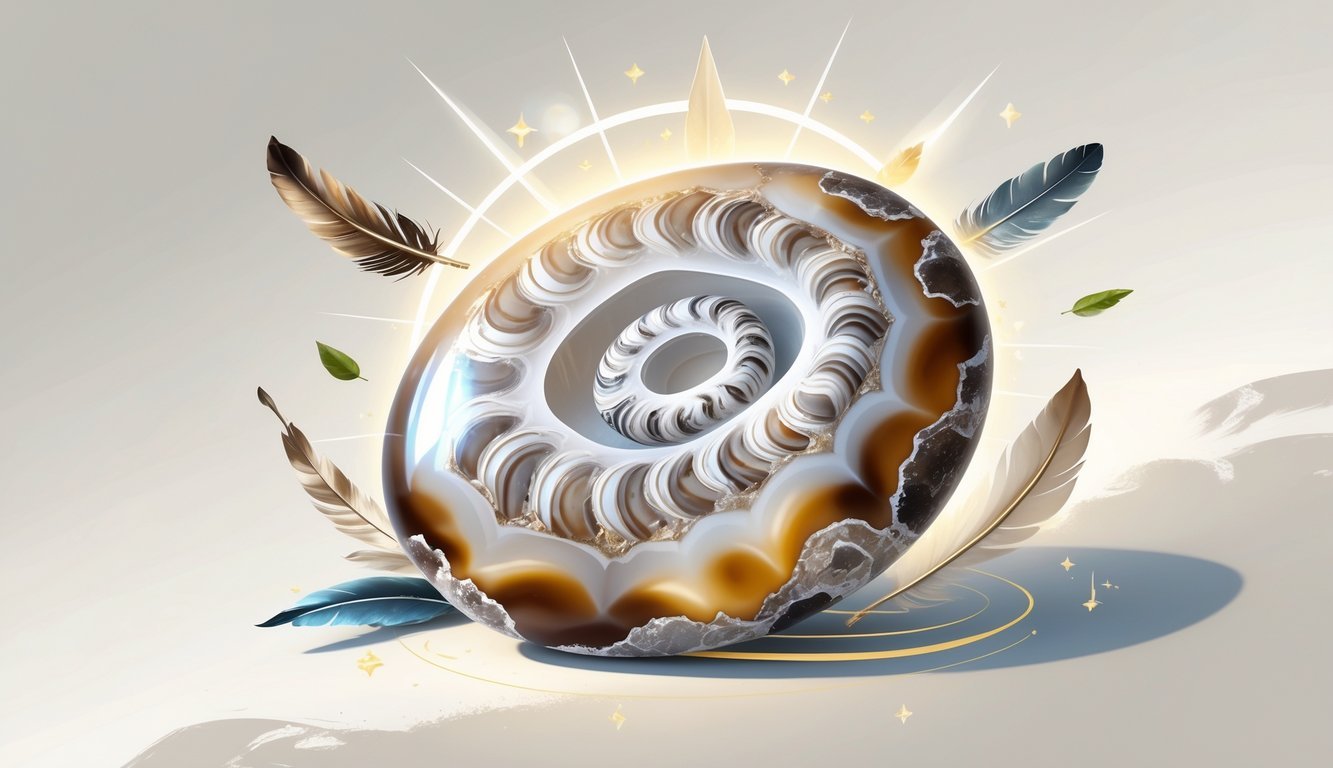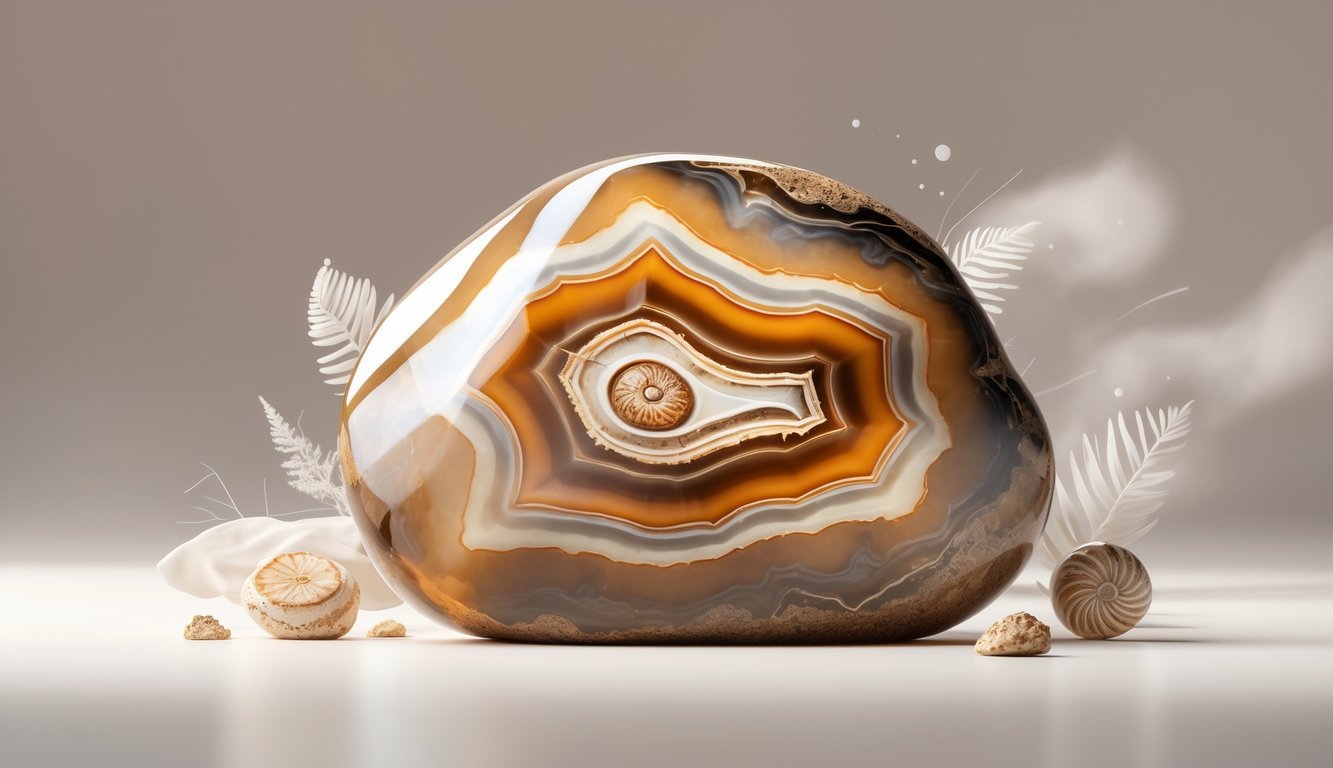PsychNewsDaily Publishers
100 Summit Drive
Burlington, MA, 01803
Telephone: (320) 349-2484
PsychNewsDaily Publishers
100 Summit Drive
Burlington, MA, 01803
Telephone: (320) 349-2484
Turritella agate features fossilized snail patterns within a translucent stone, primarily sourced from Wyoming, valued for its grounding properties and unique geological history.

Turritella agate stands out thanks to those tiny snail fossils you can spot inside its brown, almost glassy surface. These little fossils make it one of the most unique agates out there, honestly—it’s like holding a piece of ancient Earth in your hand.
Most of the time, people find this stone in Wyoming, where collectors and nature lovers value it for its beauty and its deep connection to the planet’s history.
If you’re into stones that tell a story, turritella agate is a fascinating pick. Folks use it for jewelry, decor, and even meditation, since many believe it helps you feel grounded and connected to your roots.
You might find your curiosity for fossils or natural history growing as you get to know this stone.

Turritella agate forms mainly from quartz and other minerals. Over millions of years, layers of rock and fossilized snail shells fused together, creating something you can actually hold.
You’ll usually find it where ancient seas once covered the land, especially in certain parts of the U.S.
Most turritella agate formed during the Eocene Epoch, which was about 50 million years ago. At that time, shallow seas spread across places like Wyoming, Colorado, and Utah.
These seas left behind thick piles of sediment—think shale and sandstone.
The sediment buried tons of tiny snails close to shore. Over time, pressure and minerals turned those layers into solid rock.
Today’s agate holds those ancient layers, and you can see them as colorful bands. Each band comes from minerals settling under different conditions, giving every stone its own vibe.
The fossils you see in turritella agate actually come from freshwater snails called Elimia tenera, not true Turritella snails (easy mistake, though). These snails lived in rivers and lakes, then got buried in mud and sand.
Silica-rich water seeped in and slowly replaced their shells—a process called silicification. The main mineral is chalcedony, a kind of quartz, often with some calcium mixed in.
This process preserved the snails’ spiral shapes right inside the stone, turning them into a durable mineral that lasts for ages.
When you pick up a rough piece of turritella agate, you can often spot those snail shapes without much effort. The blend of fossils and quartz makes the rock tough and gives it that cool, see-through look.
The Green River Formation in Wyoming is hands-down the best-known spot for turritella agate. Collectors sometimes call it Elimia agate to avoid confusion with marine fossils.
You can also find some in Colorado and Utah, but not as much. Other countries like Germany, India, and Russia have similar stones, but they’re way rarer.
Usually, you’ll find this agate in rough chunks mixed with shale and sandstone. The visible fossils make it a favorite for collectors and anyone who loves a bit of natural history with their gemstones.

Turritella agate stands out for its fossil patterns and deep, earthy colors. People use it for jewelry, spiritual healing, and even as a decorative touch around the house.
Its unique features give it value as both a collectible and a tool for personal growth.
This stone is what you’d call fossiliferous agate—it’s packed with fossilized snails, mostly those spiral shapes you notice right away. The fossils show up as dark brown or black swirls against white, cream, or tan bands.
That color contrast really draws your eye.
Lapidaries often cut turritella agate into cabochons for rings and pendants. You’ll also see it polished into tumbled stones, bookends, or even small sculptures.
It’s a pretty sturdy stone, so it handles daily wear well. Each piece looks different, thanks to those natural bands and fossil shapes.
Many folks use turritella agate as a grounding stone. It connects you to the earth and helps balance your root chakra.
This grounding energy can support emotional healing and help you stay steady during tough times.
Some believe it brings courage, strength, and protection. If you’re feeling anxious or facing big changes, it might help calm your nerves.
People use it in meditation, for personal growth, or even to explore past life memories. It’s also supposed to boost wisdom, leadership, and clear communication by building up your confidence and intuition.
Turritella agate often symbolizes your connection to roots and ancestry. Some call it a survival stone because it links you to ancient life and nature’s resilience.
People have used it as a charm to ward off negative energy.
In stories and folklore, those spiral fossils remind us of life cycles and spiritual growth. The stone’s earthiness encourages healing and balance.
Some folks even associate it with passion and power, drawing from the sun and natural forces. It’s a favorite among Geminis for its balancing effect on energy and emotions.

Turritella agate connects to certain spiritual beliefs and comes from just a few places in the world. People use it for meditation, healing, and for working with specific energy centers in the body.
You’ll notice prices vary a lot depending on what you’re looking for.
Many use turritella agate for grounding and connecting to the past. It’s said to help you tap into your roots, ancestry, and even memories from past lives.
People believe it brings stability and calm, making you feel more in tune with the earth.
If you meditate with turritella agate, it might help you access past life intuition. That can deepen your spiritual awareness and help you connect with your inner self.
Some say it also supports healing by keeping you balanced and focused during meditation.
You’ll mostly find turritella agate in the Green River Formation in Wyoming, USA. This area is famous for its fossil-filled stones.
Other places like Colorado and Utah have some, but Wyoming is really the main source.
Turritella agate links up with the root chakra. It’s all about grounding energy and helping you feel safe and secure.
When you work with this chakra, the stone can help you feel more stable, both physically and emotionally.
Prices depend on quality, size, and whether the stone’s polished or rough. Small pieces can be just a few bucks, but well-formed, polished stones cost more.
Jewelry and beads made from turritella agate might run higher, especially if the craftsmanship stands out.
People often carry or wear Turritella Agate when they want to feel more grounded or calm. Some folks like to place it on their body during energy work, hoping it’ll help balance the root chakra.
Others use it in meditation, maybe to bring up memories from past lives or just to support emotional healing.